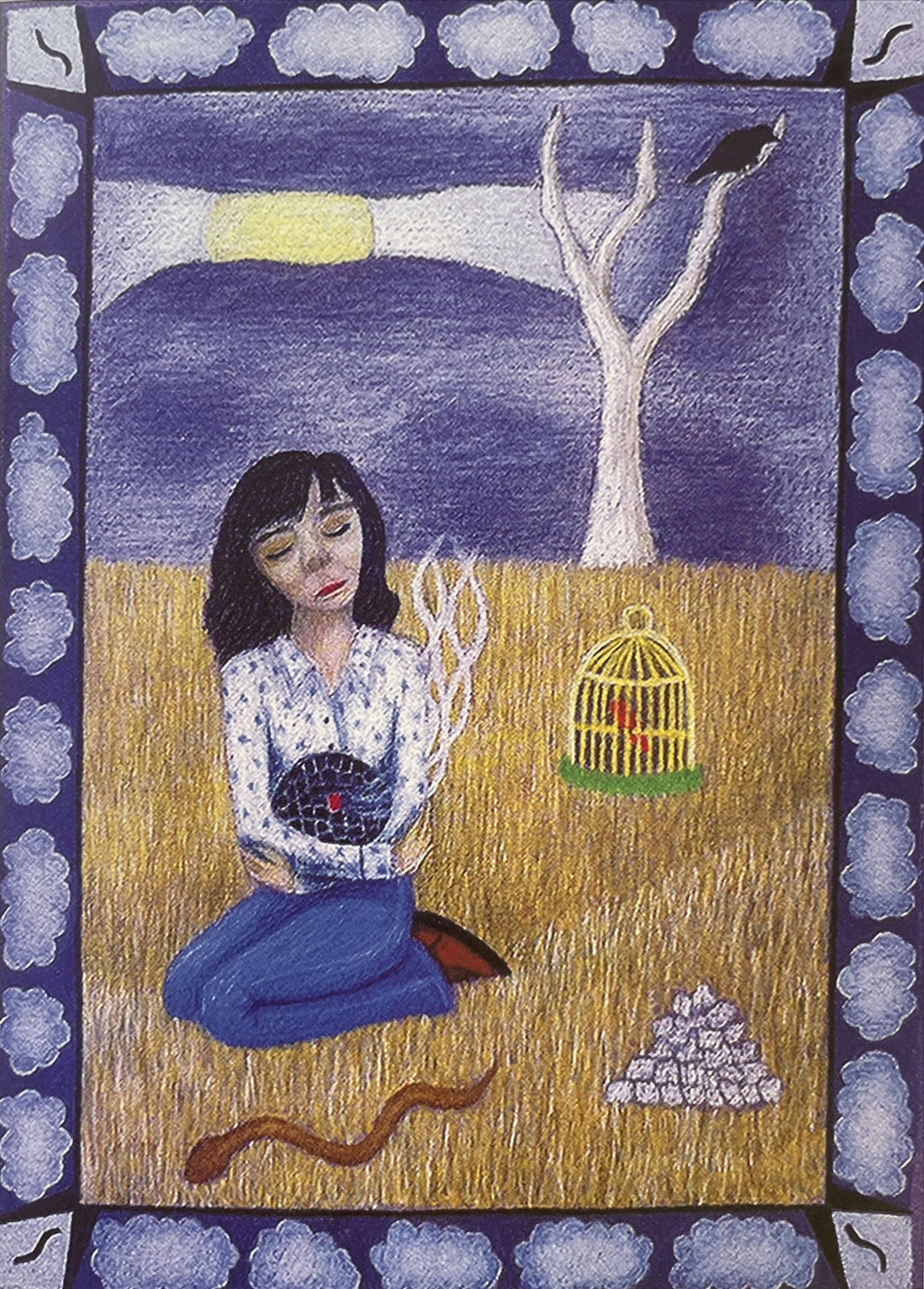Featured Painting Title: The Death Inside
By Michelle Hosking
"That feeling (or non feeling) of deadness, unable to enjoy anything, unable to look forward to anything or feel happiness."
-
What is depression
The word depression is used in many different ways. People feel sad or blue when bad things happen. However, everyday "blues" or sadness is not a depressive disorder. People with the "blues" may have a short-term depressed mood, but they can manage to cope and soon recover without treatment. The depression we are talking about in this chapter is major depressive disorder, a type of mood disorder.
Major depressive disorder lasts for at least two weeks and affects a person's ability to carry out their work and usual daily activities, and to have satisfying personal relationships.
Mood disorders affect 6.2% of Australians aged 16-85 years in a given year. The most common mood disorder is major depressive disorder which affects 4.1% in any one year; 5.1% of females and 3.1% of males. The median age of onset is 25 years which means that half the people who will ever have an episode of mood disorder will have had their first episode by this age. Depression often co-occurs with anxiety disorders and substance use disorders. Depression is more common in females than males. It is often recurrent (that is, people recover but develop another episode later on). Once a person has had an episode of depression, they become more prone to subsequent episodes during their life.
Signs and symptoms of major depressive disorder
If a person is clinically depressed they would have five or more of these symptoms (including at least one of the first two) nearly every day for at least two weeks:
• An unusually sad mood
• Loss of enjoyment and interest in activities that used to be enjoyable
• Lack of energy and tiredness
• Feeling worthless or feeling guilty when they are not really at fault
• Thinking about death a lot or wishing to be dead
• Difficulty concentrating or making decisions
• Moving more slowly or sometimes becoming agitated and unable to settle
• Having sleeping difficulties or sometimes sleeping too much
• Loss of interest in food or sometimes eating too much. Changes in eating habits may lead to either loss of weight or putting on weight.
Not every person who is depressed has all these symptoms. People differ in the number of symptoms they have and also how severe the symptoms are. Even if a person does not have enough symptoms to be diagnosed with a depressive disorder, the impact on their life can still be significant.
Symptoms of depression affect emotions, thinking, behaviour and physical well-being.
Some examples are listed below:
- Emotions: Sadness, anxiety, guilt, anger, mood swings, lack of emotional responsiveness, feelings of helplessness, hopelessness, irritability.
- Thoughts: Frequent self-criticism, self-blame, worry, pessimism, impaired memory and concentration, indecisiveness and confusion, a tendency to believe others see you in a negative light, thoughts of death and suicide.
- Behaviour: Crying spells, withdrawal from others, neglect of responsibilities, loss of interest in personal appearance, loss of motivation, slowed down, non-suicidal self-injury, using drugs and alcohol.
- Physical: Chronic fatigue, lack of energy, sleeping too much or too little, overeating or loss of appetite, constipation, weight loss or gain, headaches, irregular menstrual cycle, loss of sexual desire, unexplained aches and pains.
How a depressed person may appear
A person who is depressed may be slow in moving and thinking, although agitation can occur. Even speech can be slow and monotonous. There can be a lack of interest and attention to personal hygiene and grooming.
The person usually looks sad and depressed and is often anxious, irritable and easily moved to tears. However, in mild depression the person may be able to hide their depression from others, while with severe depression the person may be emotionally unresponsive and describe themselves as "beyond tears". Their thinking often has themes of hopelessness and helplessness, with a negative view of the self ("I'm a failure," "Its all my fault," "Nothing good ever happens to me," "I'm worthless," "No one loves me"), the world ("Life is not worth living," "There is nothing good out there") and the future ("Things will always be bad").

